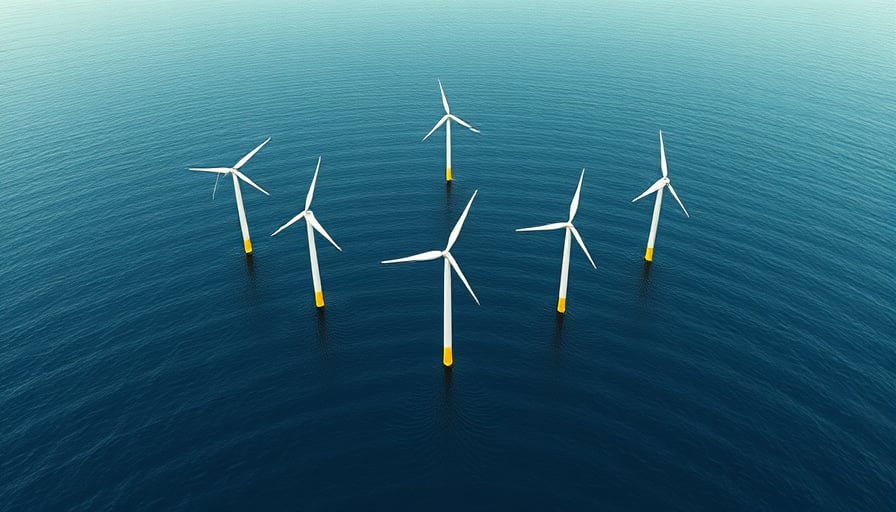Strategic Shift and Technical Implications for Power Assets Holdings Limited
Power Assets Holdings Limited, a Hong Kong‑listed utility, has announced a decisive pivot toward expanding its renewable‑energy portfolio outside China. The company reiterated its commitment to broadening its presence in overseas power markets and to adding more long‑term, stable‑income projects to its holdings. In addition, it plans to explore and invest in energy‑storage solutions, while enhancing storage facilities at existing power operations to improve overall asset efficiency and revenue stability. The announcement reflects Power Assets’ ongoing effort to diversify its generation mix and strengthen its position in the evolving global power sector.
1. Grid‑Stability Considerations for a Diversified Asset Base
The integration of renewable generation—particularly wind and solar—introduces substantial variability in power output. To maintain voltage and frequency stability across the grid, operators must employ a combination of active and reactive power controls. Power Assets will need to deploy advanced grid‑forming inverters capable of providing synthetic inertia and fast‑acting frequency support. Additionally, dynamic line rating (DLR) systems will be essential to maximize transmission capacity in the presence of fluctuating power flows, especially on international interconnections that may lack the legacy infrastructure of traditional bulk‑power corridors.
2. Renewable Integration Challenges and Transmission Expansion
Large‑scale offshore wind farms and solar parks typically sit far from load centers, necessitating substantial high‑voltage (HV) transmission upgrades. The company’s overseas acquisitions will likely involve the construction of 400‑kV/500‑kV corridors to interconnect new generation with existing bulk‑power networks. Engineers must design these lines to accommodate bi‑directional power flows, which require transformer tap‑changer coordination and the integration of HVDC links for efficient long‑distance energy transfer. Moreover, the use of series compensation and flexible AC transmission system (FACTS) devices will mitigate voltage sag and support power‑quality objectives in densely populated regions.
3. Energy‑Storage Deployment as a Grid‑Stabilization Tool
Energy storage—both battery energy storage systems (BESS) and pumped‑hydro storage—provides multiple services: peak‑shaving, frequency regulation, and reserve provision. The company’s strategy to enhance storage facilities will necessitate a detailed techno‑economic analysis of storage sizing. For instance, a 1‑MW/2‑MWh BESS can offer 30 minutes of discharge, which is valuable for short‑term frequency support, whereas a 10‑MW/40‑MWh system can provide several hours of capacity for load‑matching in a high‑renewable context. Coupling storage with renewable generation also enables arbitrage, allowing the company to purchase electricity at lower wholesale prices during off‑peak periods and sell at peak times, thereby improving revenue stability.
4. Regulatory Frameworks and Rate Structures in Key Markets
Operating in multiple jurisdictions requires navigating diverse regulatory regimes. In many European and U.S. states, market rules now require utilities to procure a certain percentage of generation from renewables under renewable portfolio standards (RPS). Moreover, the implementation of grid‑code compliance mandates the provision of ancillary services, often priced via capacity markets or ancillary‑service tariffs. Power Assets will need to model the impact of these rate structures on projected cash flows, taking into account potential revenue streams from ancillary service contracts and capacity payments.
Regulatory uncertainty, however, remains a risk. Policy shifts—such as the reduction of feed‑in tariffs or the re‑pricing of transmission costs—can erode the expected return on renewable investments. Engaging with regulators early to secure favorable tariff structures and to participate in grid‑planning processes will be essential to mitigate these risks.
5. Infrastructure Investment Requirements and Capital Allocation
The capital intensity of expanding renewable capacity abroad, coupled with the need for advanced transmission and storage, demands a robust financing strategy. Power Assets must balance equity and debt issuance while maintaining an optimal debt‑to‑equity ratio to preserve credit ratings. Additionally, the company should explore green bonds and utility‑grade renewable energy financing instruments, which can attract ESG‑focused investors and potentially offer lower borrowing costs. From an engineering perspective, investment decisions should be guided by an integrated assessment of net‑present‑value (NPV) across multiple scenarios, incorporating grid‑stability constraints and the potential need for future retrofitting.
6. Economic Impacts on Consumers and Utility Modernization
The shift toward renewables and storage is expected to influence retail electricity prices in the long term. While the upfront cost of renewable projects is higher than that of conventional plants, the lower operating costs (fuel and maintenance) and the declining cost of solar and wind technologies tend to offset these expenditures over the asset life cycle. Nevertheless, consumers may experience temporary rate adjustments to cover the capital outlays required for new infrastructure and grid upgrades. Regulatory bodies often mitigate this effect through rate‑pacing mechanisms and investment‑rate caps.
Utility modernization—encompassing the deployment of smart grid technologies, demand‑side management platforms, and advanced metering infrastructure—also plays a pivotal role. These systems improve operational efficiency, reduce transmission losses, and enable dynamic pricing that aligns consumer behavior with grid conditions. In turn, such measures can lower overall system costs and help absorb the variability introduced by renewables.
7. Conclusion
Power Assets Holdings Limited’s strategic pivot to overseas renewable expansion, coupled with a concerted focus on storage and grid‑stabilization technologies, represents a forward‑looking approach aligned with global energy transition imperatives. The company’s success will hinge on its ability to engineer resilient transmission and distribution systems, navigate complex regulatory landscapes, and secure disciplined financing for capital‑heavy projects. By doing so, it can deliver stable, long‑term returns to shareholders while contributing to a cleaner, more resilient power sector that ultimately benefits end consumers.
